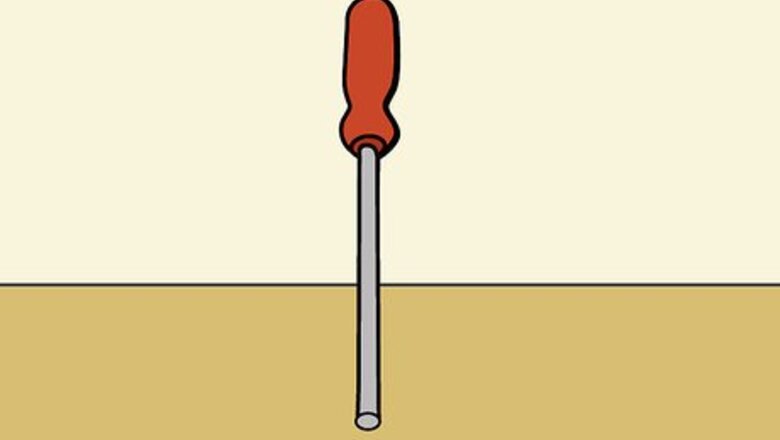
views
Positioning Your Tools
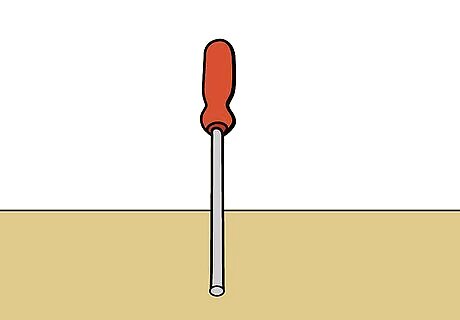
Hold the sharpening steel point-down on your work surface. Hold the handle of the honing steel in your non-dominant hand, so that it's protected by the guard at the top of the handle. Point the tip of the steel down onto a sturdy work surface. The honing steel should be completely vertical. The honing steel should be firmly pressed against the work surface so it won't slide when you begin honing the knife.

Position the steel at arm’s length in front of you. To prevent injury, keep the honing steel arm's length in front of you. Even if the honing steel slips, it will be far enough from you to prevent the knife blade from cutting you.
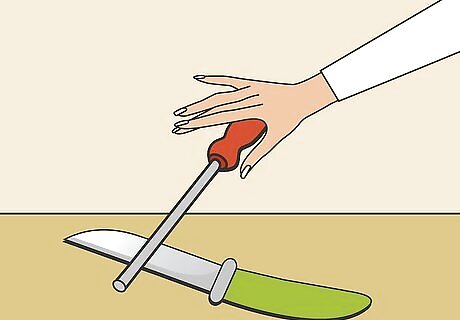
Place the knife blade against the honing steel. Take the knife you want to hone and press the bottom (heel) of it against the top of the steel. The blade should be near the handle and positioned as if you were going to cut into the honing steel.

Angle the knife at 15 to 20 degrees. Tilt the knife so it's at a 15 to 20-degree angle. You can adjust the degree to a lower angle for a sharper edge, or a higher angle for a more durable one.
Honing the Knife
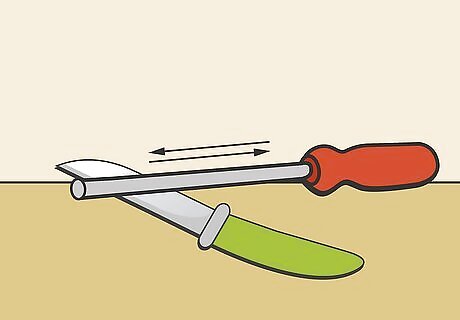
Run the blade down the steel as you pull it toward you. Smoothly bring the knife down and towards yourself on the honing steel. Keep the knife at the same angle as you move the knife. The tip of the knife should be at the base of the steel. You only need to apply light pressure as you move the blade. You should also move the blade slowly to reduce the risk of cutting yourself.
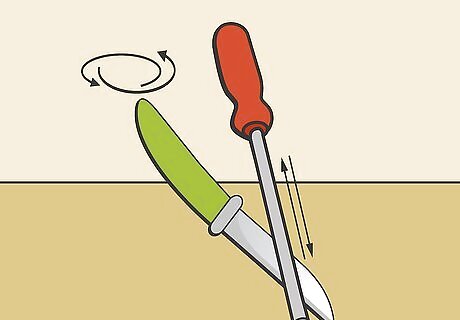
Run the other side of the knife down the steel. Keep holding the honing steel vertically. To hone the other side of the knife, place the bottom (heel) of the blade on the other side of the steel near the top. Apply light pressure and bring the blade down the steel.
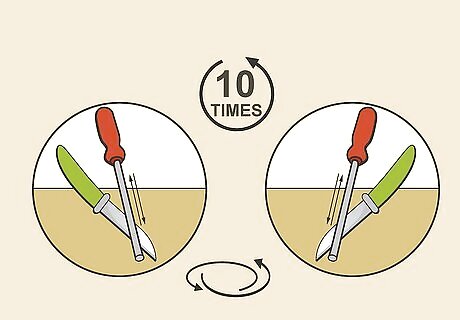
Hone each side of the knife blade 5 to 10 times. Depending on how hard or dull your knife is, you'll need to run each side of the blade down the honing steel 5 to 10 times. You can either completely hone one side at a time or alternate them so long as you hone them the same number of times.
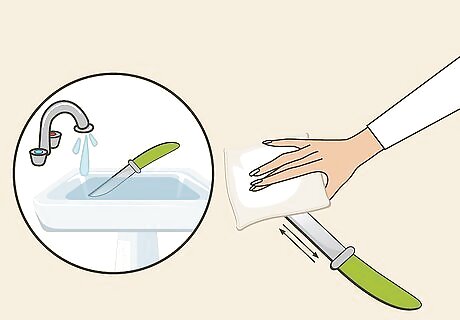
Wipe the blade clean with a soft cloth. Rinse the blade of the knife under running water and then dry the blade with a soft cloth. While honing shouldn't remove metal from the blade, microscopic metal filings might have come off the blade.
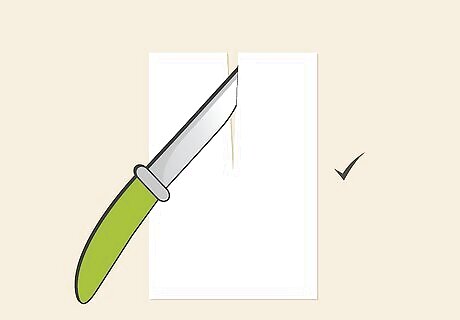
Test the sharpness of the knife. If your knives still won't cut through paper after you've used the honing steel, they may be too dull, pitted, or nicked. You can either use a sharpening stone, electric knife sharpener, or have the knives professionally sharpened.
Maintaining Your Knives
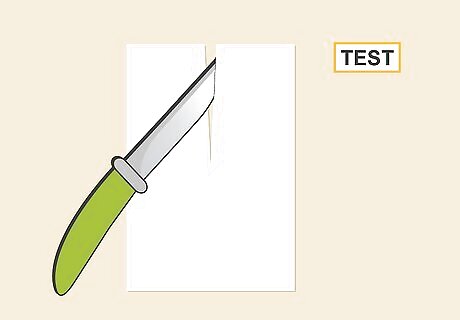
Check the sharpness of your knives frequently. Determine which of your knives needs honing by holding up a piece of newspaper. Slice down through the paper with a knife. If the knife is sharp, it will easily and cleanly cut right through. If the knife is dull, it won't pass through the paper or it might tear it.
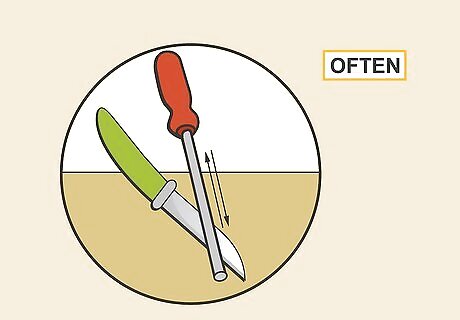
Hone or sharpen your knives often. Hone the knives as soon as they begin to feel a little dull or resist cutting. If you cook frequently, you might need to hone several times a day. You should also sharpen your knives once honing no longer improves your knives. You may need to sharpen the knives only once or twice a year. If you're cutting through something very hard, like a large cut of meat with bones, you might need to stop and hone the knife while you're cutting the meat.
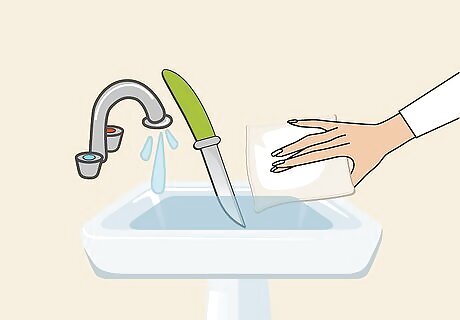
Hand wash your knives to prevent damage to the blades. While many knives are sold as being dishwasher safe, never use the machine to wash your knives. Moisture can get into the handle and damage the knife. Instead, wash your knives in the sink and take care to avoid bumping the blade against other dishes.
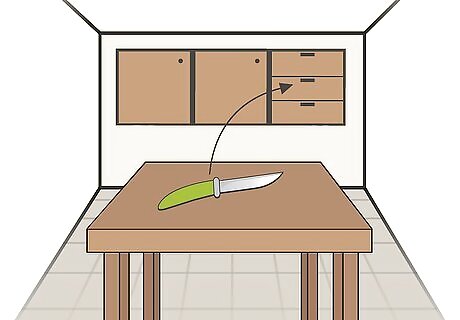
Store the knives in a block or rack to protect the blades. Consider storing your knives in a knife block or on a magnetic knife rack. It's important to store the knives in a way that prevents the blades from knocking into other utensils. Protect the blades to keep the knives sharp.
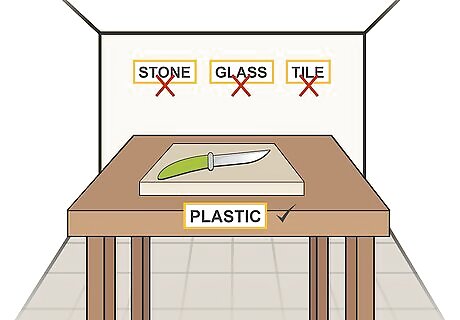
Use your knife on wood or plastic surfaces. Avoid using cutting boards or counters made of stone, glass, or tile. Cutting on these surfaces will dull your knife blades quickly. Instead, only cut on wood or plastic surfaces.















Comments
0 comment